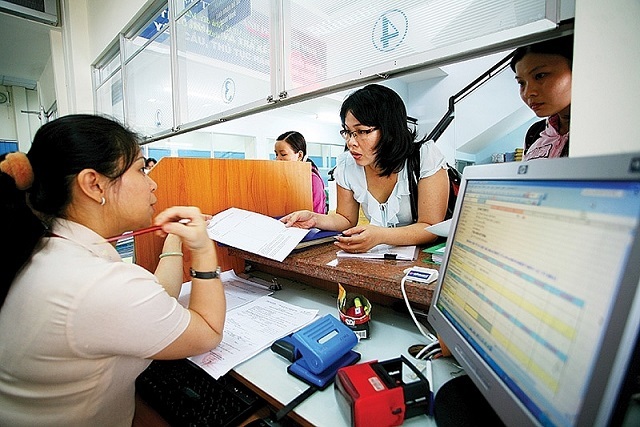
While tax cuts are always welcome, the country’s previous reliance on FDI attraction through incentives cannot be sustained alone as the economy evolves
The Ministry of Finance (MoF) has just submitted the draft document to the government to implement the National Assembly’s resolution on corporate income tax (CIT) policies to support small- and medium-sized enterprises (SMEs). Accordingly, the MoF proposes a new 15-17 per cent CIT for SMEs to replace the current 20 per cent.
In particular, small enterprises, which have a total revenue between VND3-50 billion ($130,430-$2.17 million) each and no more than 100 employees, might enjoy a CIT of 17 per cent. The threshold for super-small businesses (total revenue below VND3 billion – $130,430 and less than 10 labourers) is 15 per cent.
Who are the beneficiaries?
The CIT cut, if approved, will impact the development of SMEs in the context of increasingly deep global integration. Vietnam is now home to more than 600,000 enterprises, nearly 500,000 of which are private firms, with SMEs and super-small enterprises making up over 96 per cent, while medium-sized and big businesses account for 2 per cent each.
The private sector is considered a driving force for growth and the backbone of the economy. It creates 1.2 million jobs and contributes over 40 per cent of the country’s GDP annually.
“The cut is good news to foreign investors in Vietnam, especially SMEs. I believe that if applied, it will help Vietnam attract more foreign investment, including US investment, in the future,” Paul Schuler, assistant professor of the University of Arizona, told VIR.
Evidently, CIT is an issue of special concern among foreign-invested enterprises (FIEs), including those from the EU, Japan, and South Korea. Japan and South Korea – the two top foreign investors in Vietnam – are among the greatest beneficiaries of the potential tax cuts.
Around 90 per cent of Japanese projects in Vietnam have a scale of less than $5 million each. According to the latest financial survey on the international operations of Japanese firms in Asia and Oceania in the 2018 financial year released in March 2019 by the Japan External Trade Organization (JETRO), among the 429 newly-licensed Japanese-invested projects in 2018, 123 had an investment scale between $100,000 and less than $500,000, up 8 per cent and 36.66 per cent on-year, respectively. Meanwhile, during the year, only nine projects had been invested with capital in excess of $100 million.
“The majority of Japanese businesses in Vietnam – around 69.8 per cent – are planning to expand operations in the country in the next one to two years. The trend of small-scale projects will continue among Japanese firms in the upcoming years,” Hironobu Kitagawa, chief representative of the JETRO Hanoi Office, told VIR.
South Korea is the other investor that has brought an increasing number of SMEs to Vietnam. Following the success of South Korean manufacturing giants like Samsung and LG, more and more South Korean SMEs have been coming to Vietnam to become their vendors.
What is more, many others are moving to tap into the growing trend of e-commerce in Vietnam to sell goods and benefit from free trade agreements.
Industry insiders forecast that with President Moon Jae-in’s New Southern Policy, more South Korean SMEs will expand to and in Vietnam.
Gain or loss?
The MoF estimates that the CIT cut might reduce state coffers by VND6.5 trillion ($282.6 million) annually. Specifically, the state would lose VND4.5 trillion ($195.65 million) in case the CIT rate was cut to 15 per cent, and around VND2 trillion ($86.96 million) from reducing CIT to 17 per cent.
“The loss is inevitable in the short term, but in the long term, the state budget will benefit from SMEs’ development. The tax cut is expected to help SMEs increase their competitiveness and develop further, thus helping cover the possible loss from an increase of CIT when they grow up,” said an economist.
More importantly, the lower CIT is expected to bring Vietnam to stand on par with other countries, thus increasing the country’s attractiveness to international investors. Currently, many countries apply a lower CIT rate than the general CIT rate Vietnam applies. For example, SMEs in China enjoy a CIT of 5, 10 or 20 per cent for varied taxable income, while the general CIT rate is 25 per cent.
Similarly, CIT incentives are also applied in Thailand and Malaysia. In particular, SMEs in Thailand are exempt from CIT or enjoy a rate of 15 per cent for varied taxable income, while the general CIT rate is 20 per cent. Malaysia applies the CIT of 17 per cent for the first taxable income of MYR500,000 ($122,544) among SMEs, while the general CIT rate is 24 per cent.
However, in this new foreign-direct investment (FDI) attraction landscape dominated by the key global trends of the Fourth Industrial Revolution, a tax cut-based investment attraction policy may be unseasonable for Vietnam which has been greatly reliant on FDI attraction through investment incentives over the past years – while the facts proved this was less effective than expected.
A recent government report admitted that as the majority of private firms are of a small scale, the percentage of profitable firms remains low, while their links to the global market remain loose. The facts partly prove that tax cuts are not enough for SMEs to take off, they need more supporting policies.
“Tax cuts are just a tool to attract FDI. The country needs a new approach to investment incentives to increase attractiveness, the quality of FDI, and national competitiveness, while protecting the environment,” said Nguyen Mai, Chairman of the Vietnam Association of Foreign Invested Enterprises.
|
Hong Sun - Vice chairman Korea Chamber of Business in Vietnam
The corporate income tax (CIT) cut for small- and medium-sized enterprises (SMEs) is a welcome decision and an important signal for both Vietnamese and foreign-invested enterprises. At present, many countries apply similar decreases to facilitate activities, thus enabling growth and increasing competitiveness in the market. South Korean investment not only focuses on powerful groups, but also on SMEs. Thus, we highly support the cut if it is approved. This new policy will attract attention from foreign businesses and help Vietnam increase its appeal to businesses, including those from South Korea. SMEs will feel secure when investing in services, consumer goods, and consultancy services. With such an incentive policy for SMEs, South Korean investment will increase. Funding from powerful groups can bring in macroeconomic results, while SMEs invest in many projects, thus contributing to job creation. We hope that Vietnam’s National Assembly will soon ratify the proposal so that the country can attract more small-scale secondary investors. Hironobu Kitagawa - Chief representative Japan External Trade Organization Hanoi Office
Actions such as joining the Comprehensive and Progressive Agreement for Trans-Pacific Partnership have created a positive investment environment in Vietnam. The additional proposal of CIT reduction is a message that the government is proactively working on attracting more foreign direct investment. The reduction will be one factor to attract more investment from Japan. However, many enterprises have pointed out that the operational system is unclear. They have faced several problems such as unclear application, complicated procedures, and so on. I believe that by removing these barriers, the Vietnamese government will develop more trust with Japanese enterprises. If so, investment incentives such as the CIT reduction can be more attractive. Nguyen Hai Minh - Member, executive committee European Chamber of Commerce in Vietnam
Eurocham lauds Vietnam’s tax reform, including the modernisation and simplification of tax administration, adoption of international standards, and gradual reduction of CIT. Recently, the Ministry of Finance also proposed to reduce CIT to 15 per cent for micro-enterprises and 17 per cent for SMEs. Obviously, this will impact the economy, as SMEs account for a major part of the domestic private sector. A tax reduction will help SMEs retain cash for investment and promote new company establishments, and most importantly, it will mitigate tax fraud which has been a key issue. However, the tax reduction policy needs to balance long-term benefits and the diminishing state budget. For foreign investors, partiularly European ones, taxation is certainly one factor to consider when entering a market, but it is not always a priority. Investors often care more about the investment environment, infrastructure, labour, and political stability. Currently, countries in the region consider tax cuts or tax incentives an advantage in attracting investment, while this will negatively impact their long-term development goals. In Vietnam, EU companies are not concerned about the tax rate but tax administration and transparency and tax inspections. As mentioned in the 2019 White Book, what matter to them are the lack of guidance on comparables in transfer pricing audits, application of double tax treaties, and incompliance with non-tax regulations. |
VIR


